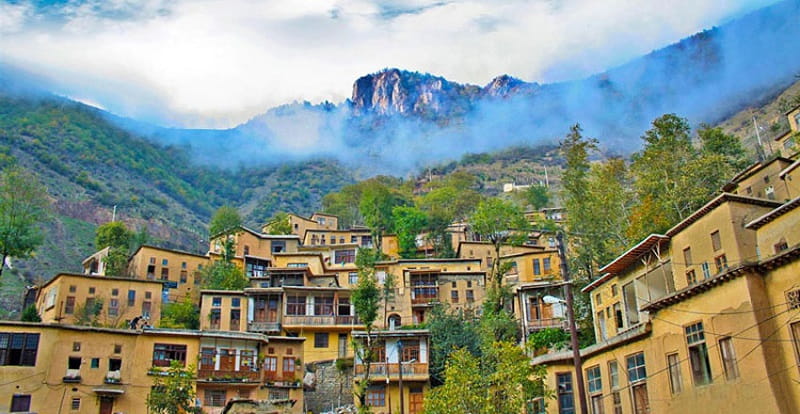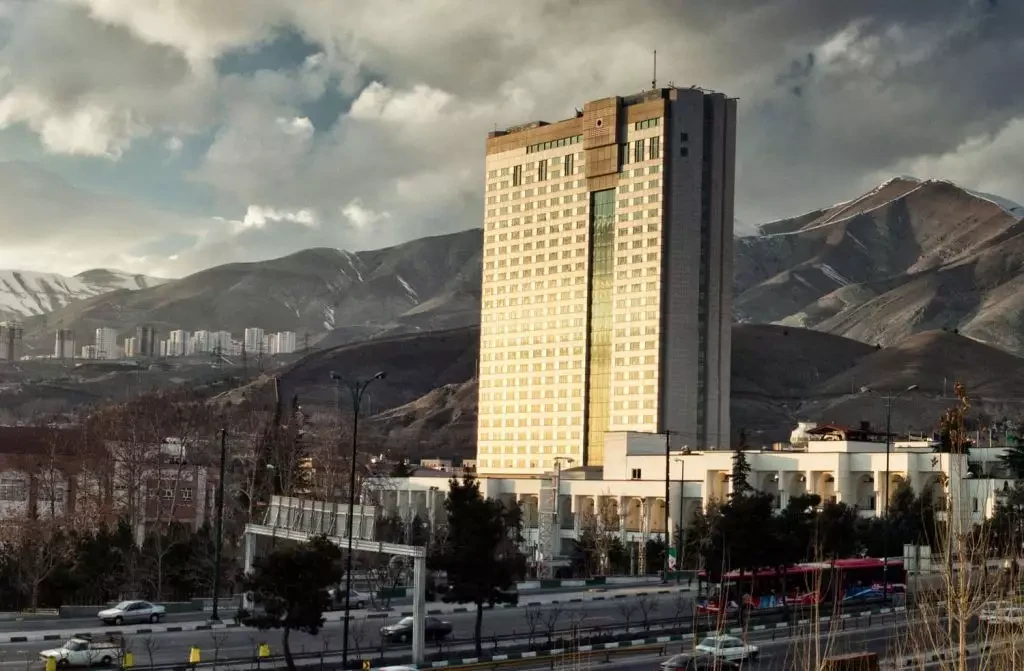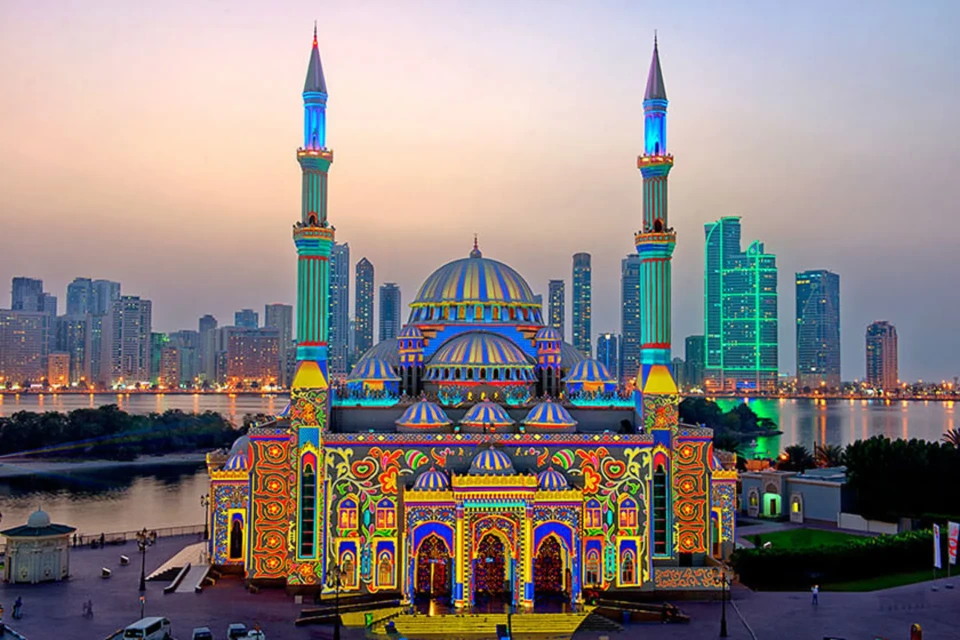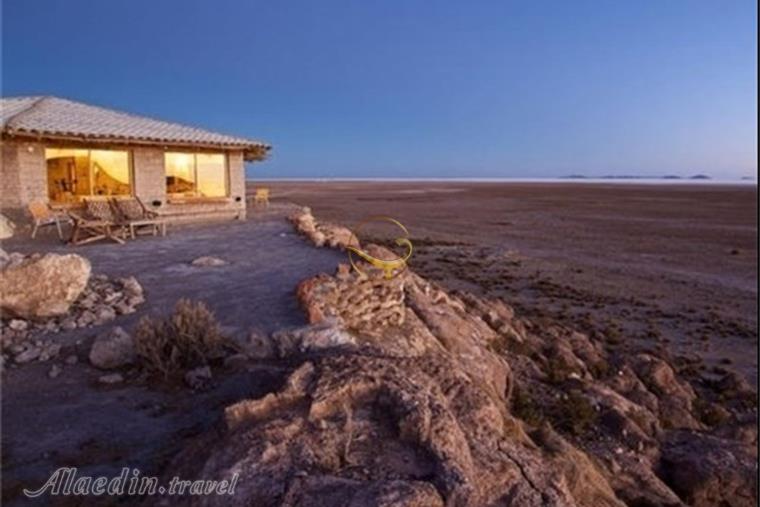Masoleh, Gilan, Iran: A Journey into Timeless Tranquility ?
A picturesque view of stepped houses, balconies adorned with candle-like flowers, pristine green forests, roaring waterfalls, and towering mountains – these are the mesmerizing landscapes that will undoubtedly captivate you. The pleasant climate, warm and hospitable people, high-quality cuisine, and dreamy atmosphere of Masouleh in Gilan province, Iran, are so enticing that they will draw you towards them time and time again.
Masouleh was registered on the National Heritage List as the 1090th cultural and natural heritage on August 21, 1975, and became the country’s first living historical city. Currently, Masouleh is under the supervision of the Cultural Heritage, Handicrafts and Tourism Organization, as well as the Environmental Protection Agency of the province, and fortunately, it is well taken care of. Let’s embark on a journey to Masouleh with Gulf City Pedia to become acquainted with this enchanting and beautiful city.
- 1. Stepped Houses and Candle-like Flowers:
Marvel at the beauty of houses built in steps and balconies adorned with candle-shaped flowers. - 2. Pristine Green Forests:
Explore the untouched and lush green forests that add to the natural charm of Masouleh. - 3. Roaring Waterfalls:
Experience the thunderous sound of cascading waterfalls that contribute to the city’s scenic beauty. - 4. Towerings Mountains:
Gaze upon the majestic and towering mountains that surround Masouleh, creating a breathtaking backdrop. - 5. Pleasant Climate:
Enjoy the delightful weather that adds to the overall appeal of Masouleh as a travel destination. - 6. Warm and Hospitable People:
Immerse yourself in the warmth and hospitality of the local people, making your stay memorable. - 7. High-Quality Cuisine:
Indulge in the delicious and high-quality cuisine that reflects the rich culinary culture of the region. - 8. Dreamy Atmosphere:
Experience the dreamy and enchanting atmosphere that pervades Masouleh, creating a unique and magical ambiance.
Embark on a journey with Gulf City Pedia to discover the wonders of Masouleh, a captivating and beautiful city that will leave you spellbound.
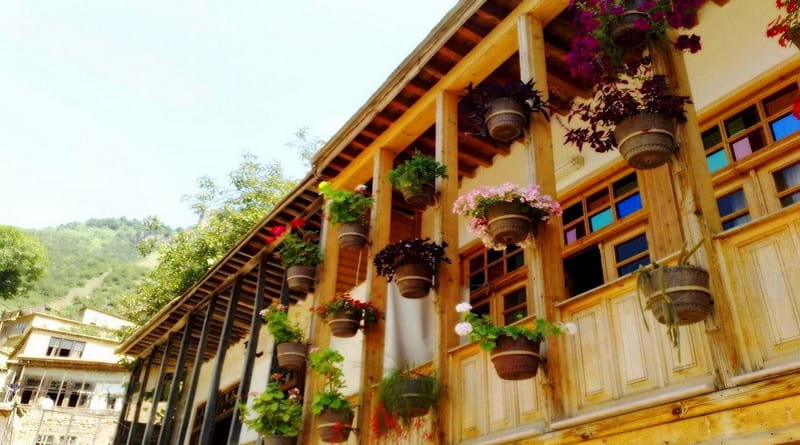
Where is Masuleh Gilan?
is located in the southwest of Gilan province, approximately 60 kilometers from the city of Rasht, in the Sardar-e Jangal district. It is situated 35 kilometers from the city of Fuman and about 20 kilometers from Maklavan. The city is bordered by Masal County to the north, Tarem Aliya in Zanjan province to the south, the plains of Fuman to the east, and Khalkhal County in Ardabil province to the west. The distance from the center of Masouleh to the Zanjan province border is about 2 kilometers, and to the Gilavan region, which is part of Ardabil province, it is approximately 10 kilometers.
Geographical Coordinates of Masouleh
The current city of Masouleh is located at approximately 48 degrees and 59 minutes east longitude and 37 degrees and 9 minutes north latitude, nestled in the heart of beautiful and unique mountain ranges. The city covers an area of about 100 hectares, bordered by mountains to the north, south, and west, and lush green valleys to the east. The elevation of Masouleh is 1,050 meters above sea level. Interestingly, due to its stepped structure, there is an elevation difference of about 120 meters between the lowest and highest points. Masouleh is surrounded by forests, and its main communication route is the Fuman road.
Masouleh, Gilan
Masouleh, with its yellow-colored houses against the backdrop of green forests and vibrant mountains, resembles a painting or postcard. It is considered one of the charming and traditional places in Gilan, offering a picturesque view that is reminiscent of a painted world enveloped in mist. Masouleh is one of the few motor vehicle-free cities in the world, where narrow alleyways and staircases make vehicular traffic impossible.
If you seek an escape from the hustle and bustle of the city, Masouleh is the perfect refuge – a place that wakes up every morning to the sound of roosters and the pleasant aroma of local bread. When traveling to Masouleh, plan to spend at least one night in this city, as the nighttime stroll and experiencing the misty morning in Masouleh are extraordinary and shouldn’t be easily overlooked.
Masouleh is undoubtedly one of the best places in Iran for unwinding and connecting with nature. The moment you step out of your accommodation in Masouleh, you feel transported to a bygone era in the heart of a historic village.
History of Masouleh
Masouleh has a history dating back 800 to 1000 years. The ancient Masouleh, also known as “Kohneh Masouleh,” is located about five kilometers west of the current city, on the road from Masouleh to Khalkhal, and six kilometers northwest of the present city. It served as the initial and ancient settlement of the people of Masouleh. The first archaeological excavations in this area were conducted by the Cultural Heritage Organization of Gilan Province in September 1995.
Archaeological findings, including iron mines and metal smelting furnaces, indicate that Kohneh Masouleh was an important center for metalworking from the 5th to the 8th centuries Hijri. Discoveries of water-resistant pottery with various colors from the Seljuk period further emphasize the historical significance of this city. Following these findings, Kohneh Masouleh was registered as a national monument of Iran in September 1999.
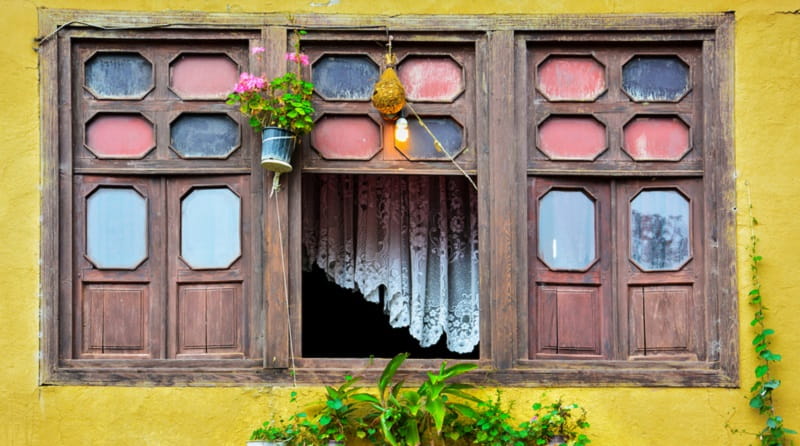
The migration of the people from Kohneh Masouleh to the current city is believed to be a result of a significant earthquake in 890 Hijri. Alternatively, according to another account, the widespread outbreak of the plague in 943 Hijri was the primary reason for the people’s relocation. Consequently, the current city of Masouleh has been the residence of the people of Kohneh Masouleh and others from various parts of Iran since the 8th century Hijri (14th century AD).
Some contemporary developments in Masouleh include the establishment of the Masouleh Public Library with a thousand handwritten books in 2010, the founding of the first government school in 2014, the confrontation of the forest forces with the forces of Russia during the occupation of Iran in World War I in 1915, the establishment of the post office in 1916, the establishment of the municipality in 1932, the closure of the municipality in 1939 (reopened in 1962), and the introduction of the telephone in 1937. The people of Masouleh played a crucial role in the history of the forest movement against the invasion of Russia and Britain. Masoulehis assisted the forest forces, and some, like martyr Babagholamali, fought alongside them.
After the construction of a new road connecting Gilan and Azerbaijan, World War II, and the turmoil resulting from it, as well as the famine of 1941, Masouleh lost much of its population. Caravanserais along the Shah road, connecting the north and Azerbaijan, and the trading market, metal and leather industries of Masouleh declined in importance. Masouleh was once a point of connection between Zanjan, Gilan, and Azerbaijan, but the construction of a new road isolated Masouleh. Therefore, many affluent residents of Masouleh migrated to the capital, other major cities, and abroad.
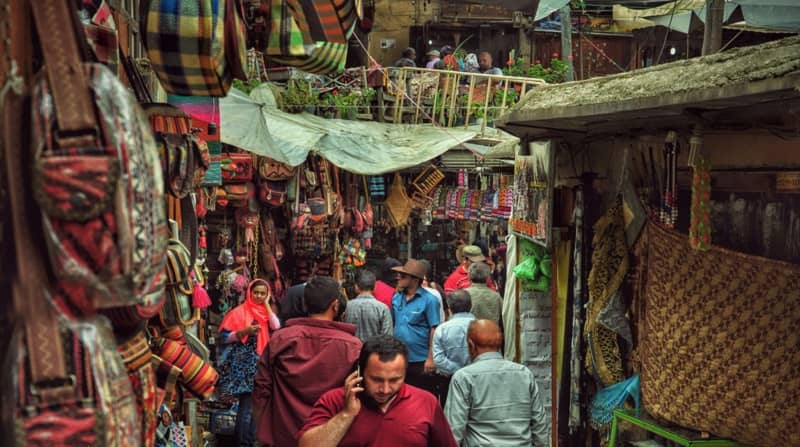
The emergence of Masouleh is associated with various historical narratives. One hypothesis traces the formation of the city back to the 3rd century AH (9th century AD) when Aqased Jamal al-Din Ashraf was fleeing from Tarem, and Awn bin Muhammad bin Ali, one of his wounded companions, sought refuge in this region. Before his death, Awn requested to be buried in this place. It is said that after Awn bin Muhammad bin Ali’s burial, shepherds gradually gathered around his grave, and over time, houses and structures were built there, giving rise to the ancient Masouleh.
Another belief suggests that after the death of Saluk Moallem along with two of his disciples named Ain Ali and Zin Ali, who were Islamic preachers, people gathered around their graves, shaping the ancient Masouleh.
During the rule of Fath Ali Shah Qajar, Masouleh was under military control and was responsible for manufacturing bullets for Iran’s artillery. In the time of Rabino, the British consul general in the city of Rasht in the early 20th century, Masouleh had five neighborhoods, two or three caravanserais, two baths, and a market with 400 shops that remained empty during winters.
The naming of Masouleh
The name “Masouleh,” pronounced as “Mooslah” in the local Talysh language since the 8th and 9th centuries AH, has been consistent in its current form. Some individuals believe that the name Masouleh is derived from the name of a nearby mountain called “Mahsalar.” According to them, the region was initially called “Masala” and later transformed into Masouleh.
According to another account, the word “Masouleh” is formed from two words, “Mas” meaning “mountain and obstacle” and “Oleh” meaning “high.” When combined with “Hay,” meaning “like,” it conveys the sense of “resembling a tall mountain” or “mountain-like.” Therefore, the name Masouleh can be interpreted as “tall mountain” or “mountain-like.” In Sanskrit and Pahlavi languages, Masouleh is also interpreted as “small moon” or “land of the small moon.”
Some people believe that the name Masouleh is taken from “Mosul,” a city in the Kurdistan region. They argue that the inhabitants of Masouleh were originally Kurds, and their religion was Yazdani. However, this narrative lacks strong historical evidence and is considered by many researchers as a superficial interpretation.
Considering the similarity of the name Masouleh to “Masal” (a city near Masouleh), the village “Masouleh Khani” in Masal County, and “Kohneh Masouleh” in the Talysh language, it can be confidently stated that the people of Masouleh moved from Kohneh Masouleh to the current city in the 8th century AH.
Architecture of Masouleh
The architecture of Masouleh belongs to the Zandiyeh era and, like many other mountainous areas in Iran, is constructed in a stepped fashion. Similar stepped architecture can be found in villages such as Kong in Khorasan Razavi, Uraman in Kurdistan, Kaj in Ardabil, and Vafs in Markazi Province. Masouleh is built in a chain-like manner, taking advantage of the natural topography for defense against invaders and benefiting from skilled architects.
The materials used in the construction of the stepped houses in Masouleh are wood, stone, and bricks. These houses usually have two floors, and houses with one or three floors are less common. Features of a Masouleh house include Daland (porch), Siyahchal (shed), Anbar (storage), high stairs connecting the ground floor and the second floor, Pashneh (toilet), Choghmeh (a relatively large room for hosting guests), Neshimangah (permanent sitting area for residents), “Sooma” (winter residence of the family), and a hall that includes a small porch.
In general, each Masouleh house consists of two parts: the winter part and the summer part. The winter part, known locally as “Sooma,” is a small room located at the back of the house where little light enters. The only source of light for this small room is called “Loon.” In the middle of the winter section of Masouleh houses, a hearth is built for cooking and providing warmth. You will also find small alcoves in this section with Chinese and copper utensils arranged on them.
The summer sitting area or “Pishkhan” has wooden lattice windows adorned with beautiful and colorful glass. It also includes several side alcoves for dishes and utensils. This part of the house is only used in the summer. In some Masouleh houses, in addition to the summer sitting area, a small room has been built on the roof called “Borj,” which is referred to as a tower in the local language. The roofs of Masouleh houses are inclined towards the mountain, and the rear part of these houses dominates the front.

Unique Architecture of Masouleh
The construction of Masouleh houses utilizes an outward-looking architectural style. In this architectural style, houses are built in height as much as possible and are open from two or four directions. The presence of balconies and large windows in Masouleh houses is an indication of the use of an outward-looking architecture. Masouleh experiences very cold winters and moderate summers, so houses are built in the southern part to receive the maximum sunlight and warmth during the cold seasons.
The houses in Masouleh are built on a single continuous piece of rock that contains natural water sources. Architects, for this reason, do not harm these one-piece rocks and do not break them. For thermal and moisture insulation, a type of grayish soil called “Foosh” is used, and the more it is stepped on, the better insulation quality it will have. The name “Foosh” refers to this soil, and the use of the roofs of houses as a passage and circulation path contributes significantly to insulating the roofs of the houses.
It is interesting to note that after the registration of Masouleh as a cultural and natural heritage, the Cultural Heritage Organization and the Environmental Protection Organization did not grant permission for construction and urban development, leading the city to remain a journey to the depths of history. Currently, Masouleh is protected against issues such as rockslides, floods, landslides, earthquakes, encroachment for urban and human development, and destruction while waiting in line for UNESCO World Heritage registration for further preservation.
Urban Fabric and Districts of Masuleh
Masuleh has four main districts named “Khanebar” (خونهبار), “Masjedbar” (مسجدبار), “Kisar” including “Kafa Kisar” and “Bina Kisar,” and “Asad Mahalleh” (اَسَ مَل), with a four-story bazaar. There are more than 350 residential units in Masuleh. Interestingly, just a hundred years ago, the number of residential units in Masuleh was 600.
There are over 120 commercial units in Masuleh’s bazaar, more than four caravanserais, two treasury-equipped bathhouses, over 33 public fountains (khane), 10 mosques, and five Imamzadehs in Masuleh. In recent years, four wooden bridges have been built over the river, with the most important and commonly used being the Bena Ali Bridge and the Haji Mohammad Hasan Bridge.
Climate of Masuleh
Masuleh boasts an atmosphere filled with the pleasant scent of chamomile and wildflowers and has a mountainous climate. It experiences refreshing springs, mild and cool summers, autumn with a seven-color rainbow, and cold snowy winters.
Masuleh spends more than a month each year under severe icing. Most days have overcast and misty weather, enhancing the beauty of Masuleh. The relatively high humidity due to abundant snow and rainfall is felt in Masuleh, but this moisture is not only not bothersome due to the cool air but also quite delightful. Masuleh experiences over a hundred misty days each year, with an average annual temperature of around 12 degrees Celsius.
Best Time to Visit Masuleh
Masuleh in Spring
In Masuleh, spring alone encompasses all four seasons. One day it rains or snows, another day is misty with the sun, and perhaps even a day with both sun and rain. The weather in Masuleh is mostly rainy in Farvardin (March-April) and may come with snowfall. The sky in Masuleh is often cloudy and misty during these days. Ordibehesht is mostly cloudy, with less rain compared to the previous month, while Khordad has sunny and pleasant days.
Masuleh residents are usually at home during spring and summer. During the Nowruz holiday, Masuleh hosts a massive influx of travelers and tourists, making this holiday the busiest time to visit Masuleh. Most days during the Nowruz holiday experience heavy traffic from the vicinity of 3 kilometers from Masuleh, and finding a parking space becomes challenging.
Masuleh in Summer
Masuleh in summer reveals its beauty with a green attire. Porches adorned with gladioli flowers, a bazaar full of eager tourists, and rooftops filled with enthusiastic photographers are among the summer scenes of Masuleh. If you plan to visit Masuleh in summer or spring, be sure to book in advance.
Masuleh in hot and sunny summer days remains cool, and witnessing the summer flowers in the lush nature is truly delightful. If you love rain, Masuleh is pleasant in the hot and humid days of summer, with occasional powder rain. Masuleh is without a doubt most beautiful during Ardibehest. The intricate red and pink flowers against the backdrop of Masuleh’s architecture will captivate any beholder. Time in Masuleh during spring swiftly passes, and everything is so beautiful that leaving Masuleh becomes a challenging task.
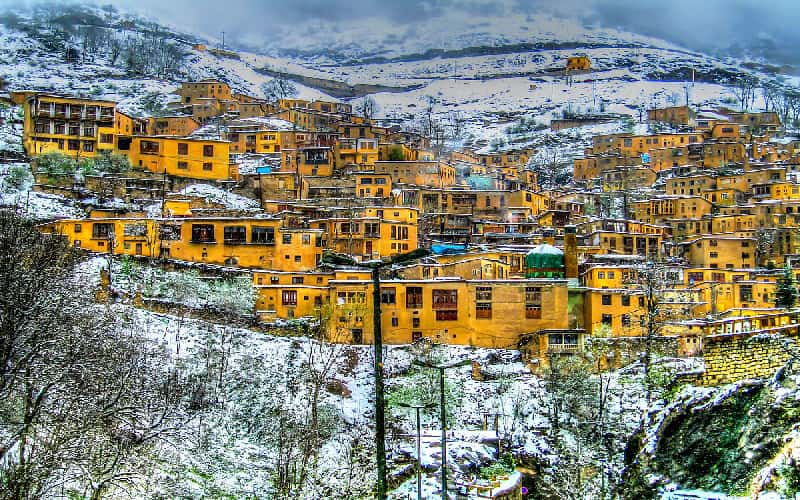
Masuleh in Autumn
In autumn, the extraordinary time to visit Masuleh arrives, as the summer tourist crowd diminishes, and nature displays its beauty with yellow and orange hues. In autumn, the charming and captivating nature of the city can be enjoyed in the tranquil and secluded alleys or by sitting on the porches of stepped houses.
The Masuleh road in the month of Aban, with its trees dressed in yellow leaves, offers an unforgettable journey. If you are a fan of rain, visit Masuleh in the autumn, especially in Aban and Azar, to experience the unique sensation of walking under the drizzles and powdery rains. Don’t forget to bring warm clothes, as autumn evenings in Masuleh are cold. In the autumn and winter seasons, there is no need to reserve accommodation in advance, and you can stay in a local house or hotel upon arrival.
Masuleh in Winter
Masuleh in winter is cool, with snowy landscapes, and watching the snowfall from the stepped rooftops is magical. The winters in Masuleh are snowy, and the roofs and alleys are covered in white. If you enjoy the cold weather and snowy scenery, winter is a good time to visit Masuleh. Winter days in Masuleh are misty, and sometimes the city is covered in snow. If you want to experience the snowy beauty of Masuleh, winter is the best time.
Overall, each season in Masuleh has its unique charm, and the best time to visit depends on personal preferences, whether you prefer the blossoming nature of spring, the coolness of summer, the colorful autumn leaves, or the snowy winter landscape.
The roofs of Masuleh’s houses are covered in snow during the winter, creating a white and enchanting landscape. Winter is the least crowded tourist season in this stepped city, allowing you to peacefully enjoy its beauty. However, it’s essential to be prepared for slippery roads with tire chains and to dress appropriately for the cold weather.
Some of the shops in the bazaar are closed during the cold season, while others remain open, serving the daily needs of the city’s residents and tourists, if any. It’s worth noting that Masuleh, being a mountainous city, lacks a gas pipeline system. Therefore, residents rely on oil rations and gas capsules during the cold winter days.
One of the daily activities for Masuleh’s residents in winter is clearing the snow from the rooftops or courtyards. Some people also venture to places with milder climates during the cold season, renting out their homes to travelers, while others choose to stay in the city. Interestingly, the population of Masuleh decreases to less than half during the winter.
Renting local houses in winter is relatively cheaper compared to the peak tourist seasons, allowing you to have a cost-effective stay in Masuleh. Walking through the snowy alleys, exploring the markets under the snowfall, and enjoying a cup of hot tea in Masuleh’s traditional cafes are among the unique and unforgettable experiences that can only be had during this season. Ash (a type of soup), baghali (broad beans), lubia (beans), and dizi (a traditional Iranian stew) are some of the warm and delicious foods you should try in Masuleh during the winter. Don’t worry about buying souvenirs; souvenir shops and photography studios with traditional clothing remain open during the winter.
Tourist Attractions in Masuleh
Masuleh, a historical and tourist city with unique architecture dating back 800 to 1000 years, stands as one of the world’s most special stepped villages or cities. With its high mountains, lush forests, meadows, museums, and numerous peaks, Masuleh is one of the most popular destinations and attractions in Gilan Province, especially in late spring and summer. Every year, thousands of tourists and mountaineers travel to this beautiful region in Gilan to see Masuleh’s historical and natural attractions and create unforgettable memories for themselves.
Natural Attractions in Masuleh
Kushom Waterfall
Kushom Waterfall, the tallest waterfall in Masuleh with a height of 30 meters, is located at the end of Masuleh’s forested valley, in the highlands of this area. The beautiful path to reach this waterfall follows the river’s course against the water flow, attracting those interested in hiking. After about an hour of hiking and passing several small waterfalls, you’ll reach the end of the gorge and a stone wall where water cascades from above, creating the stunning Kushom Waterfall.
Masuleh River and Waterfall
Masuleh River is a relatively high-flow river that originates from the high mountains, fed by upper springs and melting snow. It passes through the center of Masuleh and continues its course alongside Masuleh’s road. In the Saryan region, the Masuleh River changes its name to Zigal and Likond rivers, entering the Anzali Wetland area. The water from this river eventually irrigates the rice paddies. Inside Masuleh, you’ll encounter a tall stone wall next to the river, preventing floods from entering the city.

Larje Cheshmeh Waterfall
Larje Cheshmeh Waterfall, a unique and beautiful natural phenomenon with a height of about 6 meters, is situated among the lush and dense forests of northern Iran. This waterfall is located just before the Masuleh village, next to the Fuman road. Small blue ponds near the waterfall have added extraordinary beauty to it. The presence of a coffee shop, rest area, and restaurant near this roaring waterfall has turned it into a lovely place for nature enthusiasts.
Tourishom Waterfall
Tourishom Waterfall is one of the most abundant and mesmerizing waterfalls in Gilan Province, located on the slopes of Mount Tourishom in Masuleh. Mount Tourishom, with an elevation of 2,850 meters, is situated in the highlands of Masuleh. The path to the beautiful and forested Tourishom Waterfall is adorned with numerous springs, creating an enchanting experience for hikers.
Larcheshmeh Waterfall
Larcheshmeh Waterfall, an extraordinary and beautiful natural phenomenon with a height of over 20 meters, is located on the Masuleh River, in the western part of Masuleh and at the beginning of the Majulan road. After a short walk along the river in the opposite direction of the water flow, you’ll reach the stunning Larcheshmeh Waterfall. This waterfall is close to the Masuleh parking area.
Masuleh’s Local Markets and Bazaar
Masuleh’s bazaar, comprised of four main neighborhoods named Khan-e Bar, Masjed Bar, Kii Sar (including Kafa Kii Sar and Bin-e Kii Sar), and Asad Mahalle, is a four-story market. There are more than 350 residential units in Masuleh, and it’s interesting to note that just a hundred years ago, the number of residential units in Masuleh was 600.
The market in Masuleh consists of more than 120 commercial units, over four caravanserais, two treasury-equipped baths, more than 33 public (blood) fountains, 10 mosques, and five Imamzadehs. In recent years, four wooden bridges have been built over the river, with the most important and widely used being the Bana Ali Bridge and Hajji Mohammad Hasan Bridge.
Masuleh’s Climate
Masuleh features a misty and fragrant air filled with the pleasant scents of chamomile and wildflowers, creating a mountainous climate. It experiences refreshing springs with abundant rain clouds, moderate and cool summers, and autumn adorned with a seven-color rainbow. Masuleh is known for its more than 100 days of misty weather, and the average annual temperature is around 12 degrees Celsius.
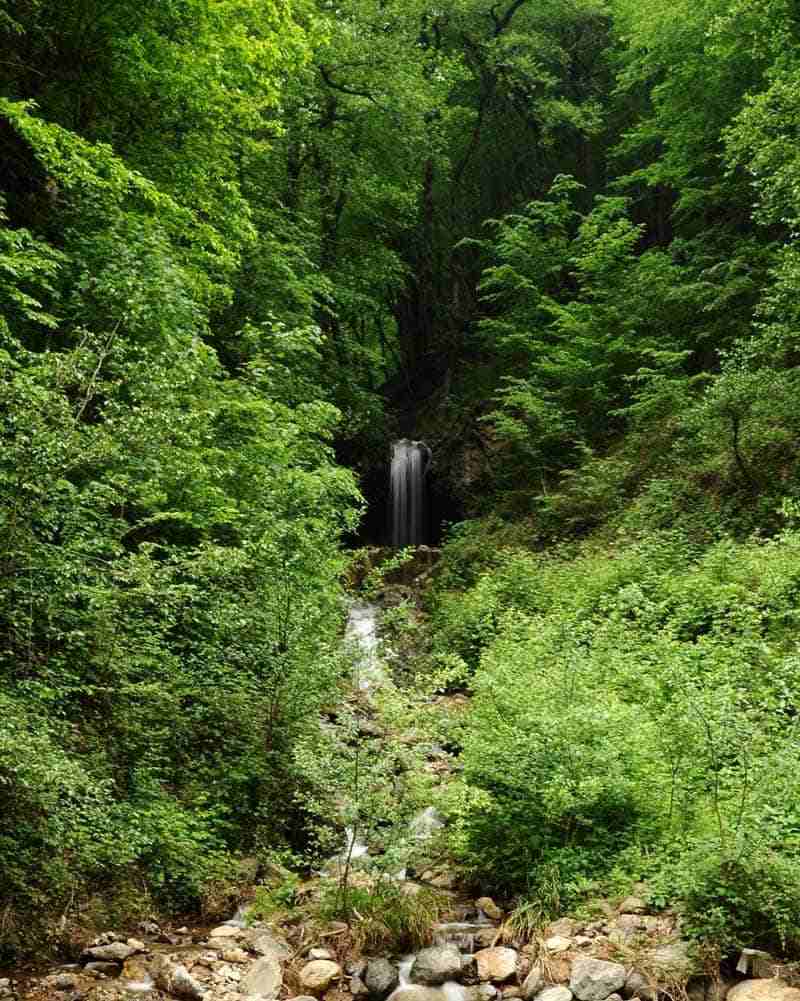
Masuleh Forest Park
Masuleh Forest Park is one of the pristine attractions of the city of Masuleh, offering a cool and clean climate, beautiful mountain views, and dense forests with tall trees that will mesmerize any observer. A significant portion of this beautiful park, spanning approximately 2,400 hectares, is composed of mountains and valleys.
Masuleh Forest Park is one of the largest parks in this region, situated at an altitude of 800 to 1,800 meters above sea level. Located in the northwest of Fuman and 35 kilometers from the city, it not only serves as a recreational area but also contributes to the conservation of the environment, trees, and various plant species. The park is home to a variety of trees, including hazelnut, oak, alder, tussock, deciduous trees, as well as medicinal and herbaceous plants.
Visitors can enjoy the excellent facilities in this unique forest park, including rest areas, gazebos, a restaurant, and benches. Don’t miss trying “Ash Doogh,” one of the famous snacks in Masuleh Forest Park, as its unique taste will leave a lasting impression.
Mount Shah Ma’alem (Masuleh Daqi)
Mount Shah Ma’alem, also known as Masuleh Daqi, stands at an elevation of 3,050 meters in the northwest of Masuleh, making it the second-highest peak in Gilan Province. Renowned among mountaineers for its challenging ascent and unparalleled scenic views, Masuleh Daqi holds a special place and significance. “Daqi” in Azerbaijani means “mountain,” and Masuleh Daqi or Shah Ma’alem translates to “Mount Masuleh.”
The mountain earned its name, Shah Ma’alem, due to the presence of a devout and ascetic figure named “Shah Ma’alem,” who sought refuge on this peak for years, engaging in spiritual practices and striving for perfection. After his passing, following his will, the location transformed into his eternal resting place and shrine. A visit to this area is profoundly nostalgic, offering tourists unforgettable and captivating moments.
Koorbar Masuleh Highland
Koorbar Masuleh Highland, also known as Koohrobar or Mountain Rubar, is one of the lesser-known yet breathtaking highlands in Gilan Province. Nestled amidst lush green mountains and forests, this highland offers a remarkable and visually stunning journey. The path to Koorbar Masuleh Highland, with its wild and attractive landscapes, is ideal for photography, mountaineering, nature walks, and hiking. The several-hour trek to reach Koorbar Highland involves moderate inclines and, in some sections, steeper slopes. However, the captivating beauty of the path and the nature will dispel all fatigue upon reaching the destination.
Lilandiz Highland
Lilandiz Highland, one of the lesser-explored highlands of Masuleh, lacks a paved road, requiring a two-hour trek through the forested areas. With no recreational or leisure facilities available, the highland features only a natural spring. Shepherds bring their flocks from surrounding villages to graze in Lilandiz, adding to the authenticity of the experience. Lilandiz Highland, with its extraordinary scenery and tranquil serenity, creates unforgettable moments for visitors.
Andre Highland
Andre Highland, situated approximately 5 kilometers from Masuleh and on the border between Gilan and Zanjan provinces along the Masuleh to Khalkhal road, is one of the beautiful highlands in the Sardar Jungle of Fuman. This highland, surrounded by lush greenery and natural wonders, is a favorite destination for nature lovers and tourists.
Ali Zakhooni Mineral Spring
Ali Zakhooni Mineral Spring, also known as “Zamzameh Spring,” is one of the remarkable natural phenomena in Gilan Province. The water of this spring is rich in bicarbonates, and its color is orange due to its proximity to a mineral deposit. While the taste of the spring water is bitter and unpalatable, locals mix it with a small amount of sugar for its purported health benefits, particularly for respiratory and digestive issues. The spring is located near the Khoshtroud River or Masuleh River and is currently channeled through a pipe with an 8-centimeter diameter, leading to a basin before flowing into the river. The spring is in close proximity to the Aram Masuleh Hotel.
Historical Attractions in Masuleh
Stepped Houses of Masuleh
In Masuleh, the roof of one house serves as the courtyard for the house above it. Therefore, when exploring this historic city, walk quietly to avoid disturbing the residents. The traditional stepped architecture of Masuleh’s houses is one of the main tourist attractions, capturing the attention of both domestic and international visitors. The houses are painted in a distinctive color, often yellow, to remain visible even in misty weather. The residents of Masuleh refresh the color annually by applying yellow paint to the walls and blue paint to the ceilings, obtained from flowers along the Masuleh River.
Colorful flowerpots, candle holders, and other decorative items on balconies enhance the beauty of Masuleh’s stepped houses. It is considered one of the most picturesque locations in the country, making it a perfect spot for photographers. Don’t forget to bring your camera to capture the unique scenes of this region.
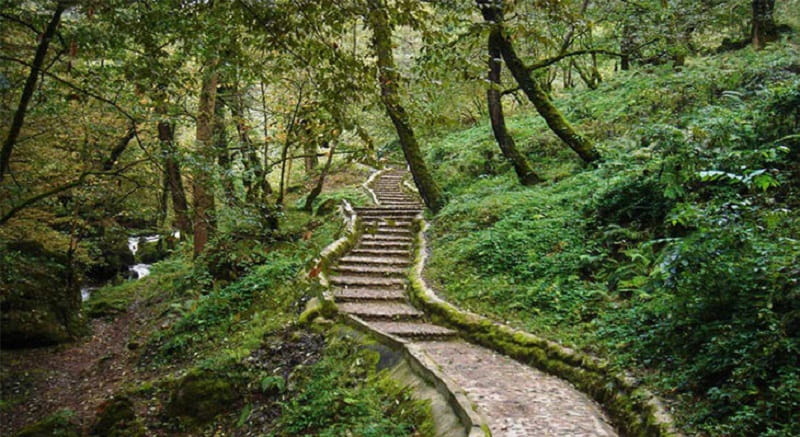
Masuleh Anthropology Museum
Established in 2002 by Farhad Sharafi Masulehi, the Masuleh Anthropology Museum is the only private museum in Iran. Divided into three sections, the museum showcases cultural artifacts from the beautiful Masuleh village. The first section exhibits historical documents and tools from the past century, the second displays items from the last two centuries in Masuleh and surrounding villages, while the third section houses objects dating back over four centuries.
The collection includes pottery, cups, traditional footwear, old coins, glazed ceramics, inscriptions, various types of mortars, cradles, agricultural tools, precious objects, and items crafted from paper, glass, leather, wood, and stone. Unfortunately, the museum is currently closed.
Masuleh Museums
Masuleh is home to three active museums: the Wildlife Museum, located next to the shrine of “Aoun ibn Ali,” and the Cultural Heritage Museum. Visiting these three museums will take approximately one hour.
Wildlife Museum
This museum showcases taxidermy specimens of animals inhabiting the surrounding areas, such as swamps, forests, and mountains. The collection includes 80 species, including eagles, falcons, bears, and more. The museum is located in one of Masuleh’s stepped houses, owned by Mr. Shahpour Akhavan.
Cultural Heritage Museum
The Cultural Heritage Museum, housed in a historic building called “Dorzi House,” preserves artifacts from the Pahlavi era and exhibits items from the Qajar period, traditional crafts, and documents related to the Jungle Movement. This small museum, located in Masuleh’s Kashesar neighborhood, is a registered national monument.
Near the Shrine of “Aoun ibn Ali” Museum
This museum displays ancient gravestones, old tomb structures, books, and works from the Timurid and Safavid periods.
Masuleh Bazaar
The Masuleh Bazaar, the vibrant heart of this mountainous region, offers a delightful experience for visitors. Colorful jams, homemade pickles, traditional dolls, kilim bags, intricately crafted mirrors, copperware, and handicrafts are among the items available for viewing and purchase in this market.
The bazaar is divided into four independent levels, with shops on the ground floor forming a single-storey marketplace, and shops on the upper level forming two floors. In every corner of Masuleh’s mountainous and unique bazaar, you’ll find cafes and restaurants with beautiful views of the lush mountains. They offer various kebabs, local dishes, and sweet and sour delicacies.

Shrine of “Aoun ibn Ali
The Aoun ibn Ali Imamzadeh, one of the three shrines in Masuleh, dates back to the second or third century AH. According to genealogical records, this shrine belongs to Aoun ibn Mohammad, the grandson of Ali, the son of Imam Ali (AS). Located in the center of Masuleh, it boasts beautiful architecture and is an attractive place for those interested in the history and architecture of post-Islamic Iran. The intricate carvings on the eight-sided tomb structure date back to 969 AH. There is also a museum adjacent to this Imamzadeh with the same name, displaying artifacts from the Timurid and Safavid periods.
Imamzadeh Hashem
Although not as ornate as the Aoun ibn Ali shrine, the Imamzadeh Hashem features mudbrick walls, a colorful wooden door, and stained glass windows on the eastern wall, making it a pleasant place to visit. This Imamzadeh does not belong to a specific Imam but has a charming atmosphere. The building is made of adobe and straw, with an exterior view of four sides and two floors. It includes a room (mosque and pilgrim residence), a shoemaker’s shop, a storage room, and the main room (sanctuary).
Masuleh Archaeological Site
The Masuleh archaeological site, also known as Kohna Masuleh, is located 6 kilometers northwest of present-day Masuleh. It served as the initial habitat for Masuleh’s residents. While the first signs of metalworking, specifically iron smelting, have been discovered, little remains today aside from scattered pieces of stone. Exploring the historical site provides a unique and fascinating experience.
Masuleh Caravanserais
Due to its strategic location on the main trade route in the past, Masuleh has several caravanserais. Haji Feyzi’s three-story caravanserai, recently restored, was a major trading post in the village. It now showcases architectural transformations from the Pahlavi era. Another notable caravanserai is Mirza Masuleh’s, recognized as a national monument in Iran, displaying architectural developments from the Pahlavi era.
Facilities in Masuleh
- – Parking
– Telephone and internet coverage
– Public toilets and portable toilets in some hotels
– Drinking water
– Various restaurants
– Grocery store for food supplies, supermarkets
– Bank service
– Gas station in Fooman and Rasht, so be sure to fill up for a 70 km round trip through the mountainous route.
– No gas pipelines
– No ATM
Access Road to Masuleh
Masuleh Road is one of the most picturesque and winding northern roads in the country, offering a memorable journey through lush greenery. Driving through this road, especially in the warm seasons, allows you to enjoy the mountainous climate. The air on the Masuleh Road is exceptionally pure and refreshing, immersing you in the enchanting atmosphere of the city.
To reach Masuleh, drive to Fooman and then take a direct road, covering approximately 35 kilometers and an hour of travel. If you don’t have a personal vehicle, you can take taxis or Masuleh minibusses from Rasht or Fooman to reach Masuleh.
The distance from Tehran to Masuleh is 382 kilometers, taking around 5 hours. The journey from Tehran to Masuleh starts on the Tehran-Karaj freeway and continues onto the Qazvin-Rasht freeway. Just before reaching Rasht and after passing the police checkpoint, there’s an exit for Fooman. After passing through Fooman, head towards Masuleh. To enter Masuleh, you need to pay an entrance fee. After parking your car, climb the stairs in front to immerse yourself in the beautiful houses of Masuleh.
Another access route to Masuleh is through the Majulan Road from Ardabil province. Majulan
is the last village in Ardabil province on the way from Khalkhal to Masuleh. This road, initially an ancient route for pedestrian caravans, later expanded with the development of villages and became accessible for vehicles. The asphalt and safety project for the Majulan to Masuleh road is nearing completion, but some parts of the road are still unpaved.
What is the city of Masuleh famous for?
The urban fabric of Masouleh represents a form of coexistence between the green spaces of the natural environment and the architectural elements of the built environment, adhering to the principles of environmentally harmonious architecture. Therefore, Masouleh can be considered a historical urban garden. Known as the most beautiful stepped village in Iran, the stepped city of Gilan, and a lively historical city, Masouleh has gained recognition for its unique qualities.
Masouleh’s urban structure, characterized by a harmonious blend of natural greenery and artificial architecture following environmentally friendly architectural principles, classifies it as a historical urban garden. It is renowned as the most beautiful stepped village in Iran, earning titles such as the stepped city of Gilan and a vibrant historical city.

